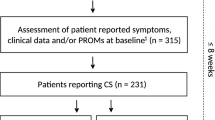Summary.
Cerebral dysfunction without corresponding structural pathology has been reported in brain imaging studies of violent offenders. Biochemical markers in the CSF reflect various types of CNS pathology, such as blood-brain barrier dysfunction (CSF/S albumin ratio), infectious or inflammatory processes (IgG and IgM indices), neuronal or axonal degeneration (CSF-tau protein) and synaptic de- or regeneration (CSF-growth associated protein-43 (GAP-43)). We compared these CSF markers in 19 non-psychotic perpetrators of severe violent crimes undergoing pretrial forensic psychiatric investigation and 19 age- and sex-matched controls. Index subjects had significantly higher albumin ratios (p = 0.002), indicating abnormal vascular permeability as part of the complex CNS dysfunction previously reported in violent offenders. Axis I disorders, including substance abuse or current medication, did not explain this finding. Since Ig-indices, CSF-tau protein or CSF-GAP-43 were not increased, there was no support for inflammation or neuronal/synaptic degeneration as etiological factors to CNS dysfunction in this category of subjects.
Similar content being viewed by others
Author information
Authors and Affiliations
Additional information
Received October 25, 2000; accepted February 21, 2001
Rights and permissions
About this article
Cite this article
Soderstrom, H., Blennow, K., Manhem, A. et al. CSF studies in violent offenders¶II. Blood-brain barrier dysfunction without concurrent inflammation or structure degeneration. J Neural Transm 108, 879–886 (2001). https://doi.org/10.1007/s007020170037
Issue Date:
DOI: https://doi.org/10.1007/s007020170037




